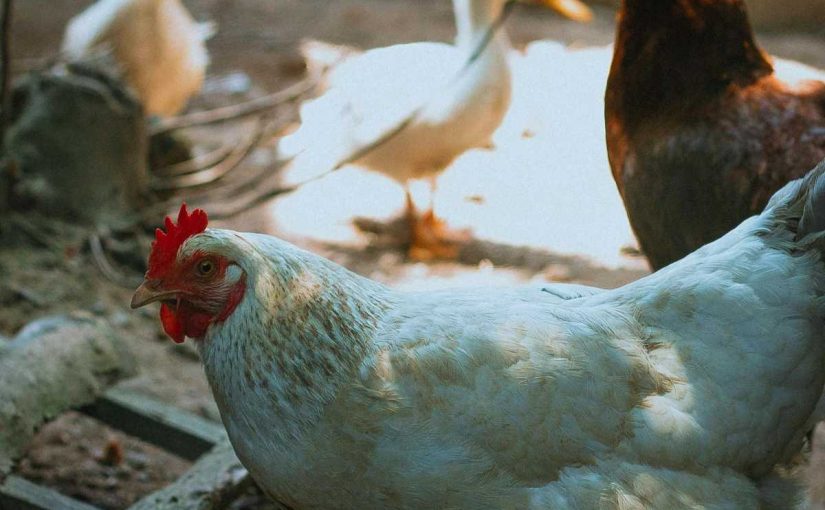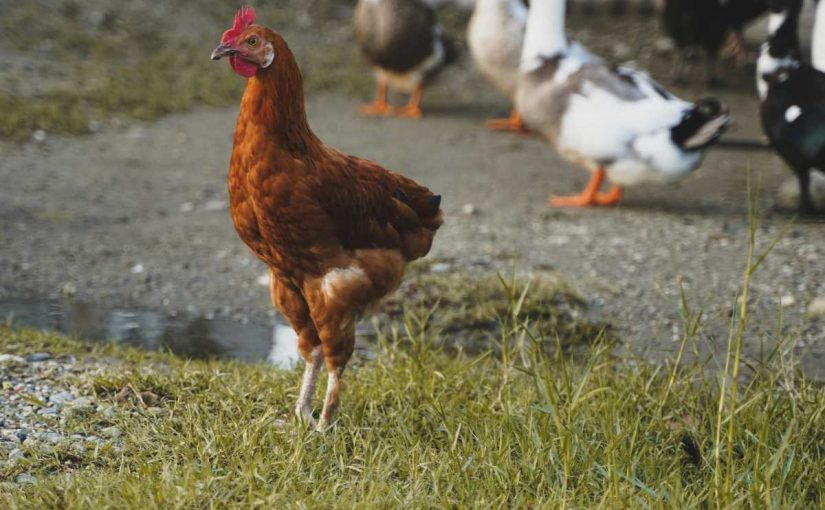Chickens are fascinating creatures with a complex social structure and a wide range of vocalizations and behaviors. Understanding their behavior can enhance your experience as a chicken keeper and improve the well-being of your flock. This guide will help you decode the clucks, cackles, and other behaviors of your chickens, allowing you to foster a healthier, happier environment for your feathered friends.
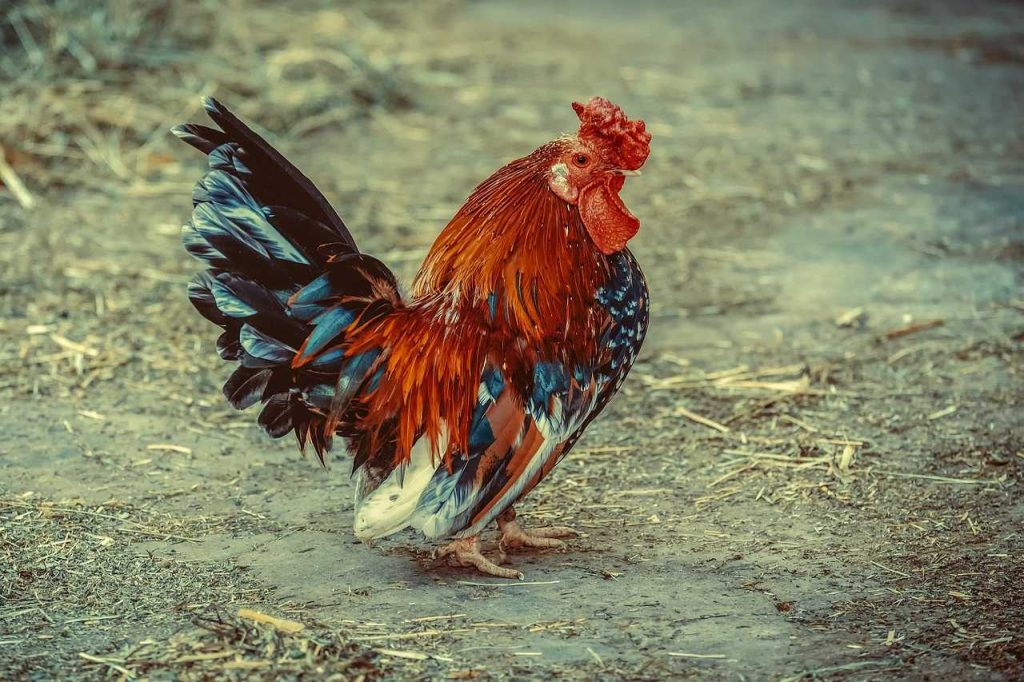
1. Understanding Chicken Communication
Chickens communicate through various sounds, body language, and interactions. Each vocalization often conveys a specific meaning. Here’s a breakdown of common chicken sounds:
Types of Vocalizations:
- Clucking: A general communication sound made by hens, often indicating contentment or a call to gather. This sound is most commonly heard when hens are foraging or during social interactions.
- Cackling: A loud and rapid series of clucks, typically made by hens after laying an egg, signaling to others that they have laid. This behavior often indicates pride and is a signal to the rest of the flock.
- Chirping: Soft, high-pitched sounds made by chicks or when chickens are feeling relaxed. This sound is often used by mothers to communicate with their chicks, reassuring them of safety.
- Squawking: A loud, alarmed sound made when chickens feel threatened or are trying to alert the flock to danger. This sound can be heard when a predator is near or if a chicken feels cornered.
- Purring or Trilling: A soft, contented sound made by chickens, often while they are being petted or are comfortable in their surroundings. It indicates happiness and a feeling of safety.
Example:
When a hen starts cackling after laying an egg, it’s her way of announcing her accomplishment to the rest of the flock, signaling them to gather around. If you hear this sound regularly, it’s a good indication that your hens are laying eggs consistently and feeling secure in their environment.
2. Body Language and Posture
Chickens express themselves not only through sounds but also through body language. Understanding their posture and movements can provide insight into their feelings and social interactions.
Key Body Language Indicators:
- Fluffed Feathers: When a chicken fluffs its feathers, it could be trying to stay warm or making itself look larger to ward off threats. This behavior can also occur when a chicken is preparing to lay an egg, as it seeks comfort.
- Pecking and Scratching: Chickens often peck and scratch at the ground as they forage for food. This behavior indicates a healthy chicken looking for a snack, helping to keep their beaks busy and their bodies active.
- Wing Flapping: Chickens may flap their wings to establish dominance, release energy, or cool down. You might notice this during a confrontation or when the temperature rises.
- Posturing: A dominant chicken may stand tall with its head held high, while a submissive one may crouch down and avoid direct eye contact. This dynamic plays a crucial role in the pecking order.
Example:
If you notice one chicken standing tall with its wings slightly spread, it may be trying to assert dominance over the others. Conversely, if a lower-ranking chicken crouches and avoids direct contact, it’s likely trying to avoid confrontation.
3. Social Structure and Pecking Order
Chickens have a well-defined social structure known as the pecking order. Understanding this hierarchy is essential for managing your flock.
The Pecking Order:
- Dominant Chickens: These individuals have the most access to food, nesting spots, and other resources. They often assert their dominance through pecking and intimidation. The dominant hen, often referred to as the “alpha hen,” usually leads the flock.
- Subordinate Chickens: Lower-ranking chickens will typically avoid confrontation and may show submissive behaviors, such as crouching or moving away from the dominant individuals. This behavior is vital to maintaining harmony within the flock.
- Establishing the Order: When introducing new chickens, be prepared for some pecking and establishing of the pecking order, which may involve temporary squabbles. This process can take several days to weeks as the new hierarchy is established.
Example:
When introducing a new hen to an existing flock, you might see some pecking and chasing as the chickens establish their new hierarchy. It’s essential to monitor this process to ensure that the new hen isn’t overly bullied and has access to food and shelter.
4. Understanding Nesting Behavior
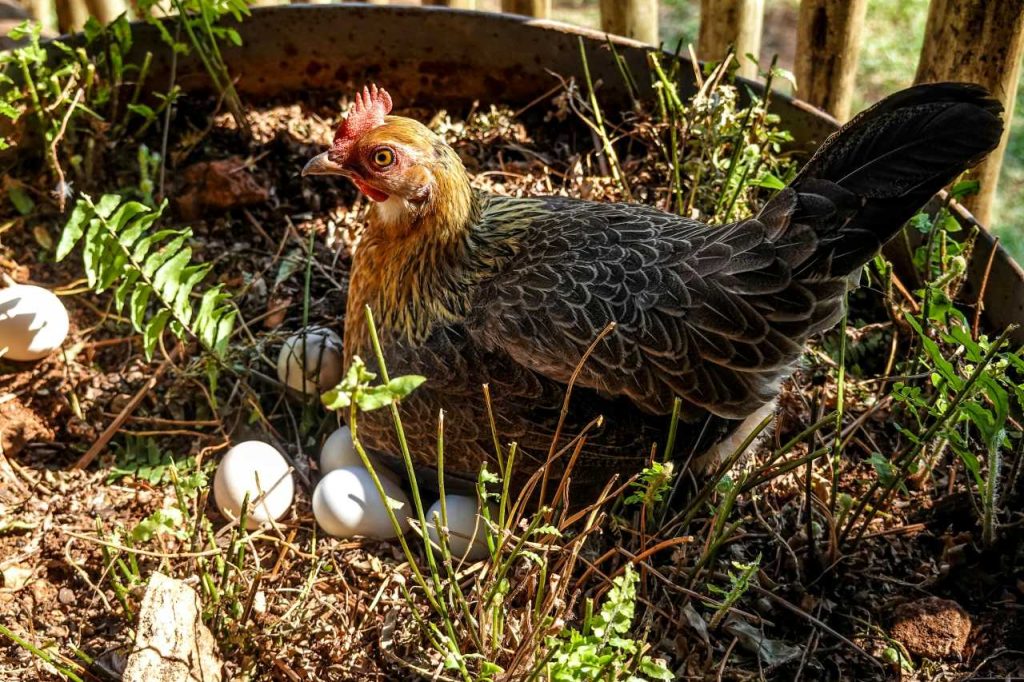
Nesting behavior is crucial for laying hens. Understanding how and why chickens nest can help you provide a more suitable environment for them.
Nesting Indicators:
- Searching for Nesting Spots: Hens will often search for quiet, dark, and secluded areas to lay their eggs. Providing nesting boxes can help satisfy this instinct and encourage hens to lay eggs in designated spots.
- Purring or Trilling: When a hen is in a nesting mood, she may purr softly while in the nesting box, signaling contentment and readiness to lay. This soft sound can indicate that she is comfortable and feels secure.
- Fussing Around: A hen may pace back and forth or act restless when she is about to lay an egg, indicating her need for a nesting spot. This behavior is often accompanied by squatting or other signs of preparation.
Example:
If you notice a hen consistently visiting a specific area and making soft sounds, she may be signaling her intention to lay an egg there. To encourage this behavior, ensure she has access to clean, comfortable nesting boxes filled with straw or hay.
5. Recognizing Signs of Stress or Illness
Understanding your chickens’ behavior can help you identify signs of stress or illness. Early detection can lead to better health outcomes for your flock.
Signs of Stress or Illness:
- Isolating: A chicken that isolates itself from the flock may be unwell or stressed. Isolation can be a sign of illness or discomfort, and it’s essential to monitor this behavior closely.
- Decreased Vocalization: A sudden drop in vocal sounds can indicate that a chicken is not feeling well. Chickens that are typically vocal may become quiet when they are sick or distressed.
- Changes in Appetite: If a chicken is not eating or drinking as usual, it may be a sign of illness. Monitor their food and water intake regularly to ensure they are staying healthy.
- Puffed Feathers and Lethargy: These are common signs of illness; a sick chicken will often sit quietly and may not engage with the flock. They may also show a reluctance to move or forage.
Example:
If you notice a chicken that is consistently separating itself from the flock and has a droopy posture, it may be time to assess its health and consult a veterinarian if necessary. Early intervention can prevent further health issues.
6. Providing Enrichment and Mental Stimulation
Chickens are intelligent creatures that require mental stimulation to prevent boredom and stress. Understanding their needs for enrichment can lead to a happier flock.
Enrichment Ideas:
- Foraging Opportunities: Scatter grains, seeds, or vegetable scraps around the coop to encourage foraging behavior. This mimics their natural behavior and helps keep them engaged.
- Perches and Roosts: Providing different levels of perches encourages climbing and exploration, mimicking natural behavior. Chickens enjoy roosting at different heights, and this can also help establish social dynamics.
- Dust Baths: Chickens love to take dust baths, which help them keep their feathers clean and free from parasites. Provide a designated area with loose dirt or sand for them to enjoy.
- Toys and Challenges: Introduce simple toys like hanging cabbage or treats in a puzzle feeder to stimulate their curiosity and problem-solving skills.
Example:
Creating a foraging area with different types of food can keep chickens entertained and engaged, promoting their overall well-being. Additionally, a dust bath area is a great way for chickens to relax and socialize.
7. Understanding the Broodiness Cycle
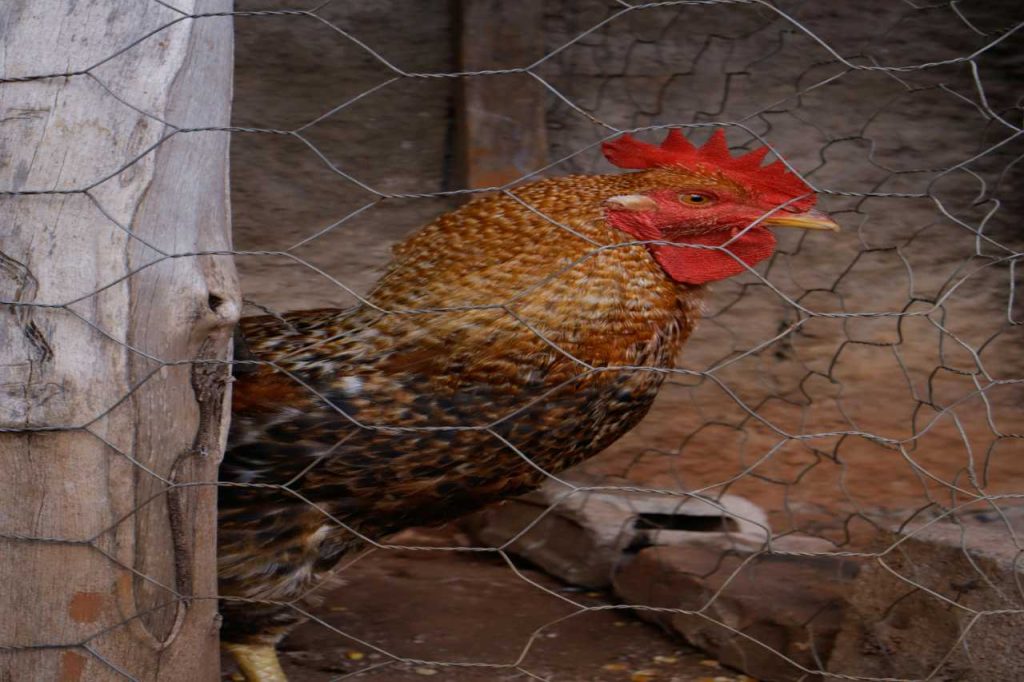
Some hens may go broody, wanting to sit on and hatch eggs. Understanding this cycle can help you manage your flock better.
Broody Behavior Indicators:
- Nesting and Sitting: A broody hen will often sit in the nesting box for extended periods, even if no eggs are present. This behavior can lead to a significant reduction in egg production.
- Aggressive Behavior: Broody hens may become territorial and aggressive if approached while on the nest. It’s essential to give them space during this time.
- Feather Fluffing: A broody hen may fluff her feathers to make her nest more comfortable. This behavior is a sign of her commitment to hatching eggs, even if there are none.
Example:
If you have a hen that shows signs of broodiness, you can either allow her to hatch eggs or gently discourage her by removing her from the nesting box. Providing a separate space for broody hens can help manage their behavior without disrupting the rest of the flock.
8. Fostering a Positive Environment
Creating a positive and safe environment for your chickens will help them thrive and express natural behaviors.
Environment Enhancements:
- Safe Housing: Ensure the coop is secure from predators and has adequate ventilation and space for all chickens. A well-constructed coop can prevent stress and potential health issues.
- Social Interaction: Chickens are social animals, so keep them in groups to prevent loneliness and encourage social behaviors. Social interaction promotes mental well-being and reduces stress.
- Clean Living Conditions: Regularly clean the coop and provide fresh bedding to promote health and comfort. A clean environment reduces the risk of disease and keeps the flock happy.
- Provide Access to Outdoors: Allowing your chickens to roam and forage outside during the day can enhance their well-being and allow for natural behaviors. An outdoor run with natural elements can keep them active and engaged.
Example:
Creating a safe and enriched environment with access to the outdoors will help your chickens thrive, resulting in healthier birds and better egg production.
Conclusion
Understanding chicken behavior is essential for any chicken keeper. By decoding their vocalizations, body language, and social structures, you can create a supportive environment that promotes their well-being and happiness. Observing your flock regularly will help you detect any changes or issues early, ensuring your chickens remain healthy and content. Embrace the joy of chicken keeping by fostering a positive, enriched, and understanding environment for your feathered friends.

